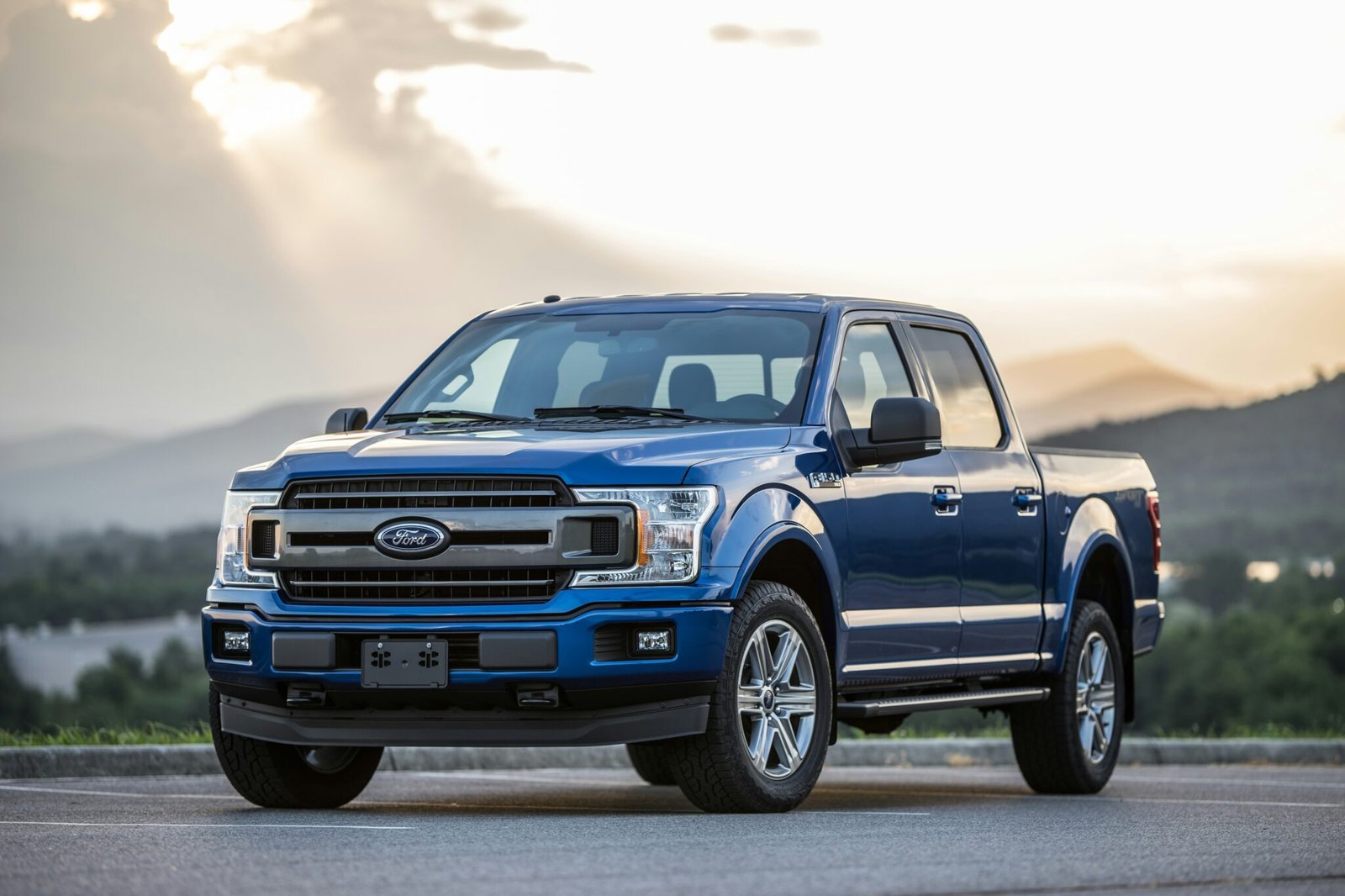The Ford F-150 is one of the most capable and versatile pickups on the market. Whether you drive a work-ready XL, a luxury-loaded Platinum, or an off-road beast like the Raptor, the F-150 is built to handle just about anything you throw at it—including long-distance road trips. But while this truck performs admirably in its stock form, there are several tuning strategies you can use to improve comfort, efficiency, towing power, and overall drivability during extended adventures.
Smart tuning isn’t just about wringing out more horsepower—it’s about refining the F-150’s behavior to match the specific demands of long hauls. If you’re planning to drive hundreds or even thousands of miles across varied terrain, these ten Ford F150 tuning tips can help you make the most of your journey.
1. Start with a Conservative ECU Tune
An ECU (Engine Control Unit) tune modifies the factory software that governs how your engine operates. This includes fuel mapping, ignition timing, throttle sensitivity, and turbo boost (if applicable). For long-distance driving, you don’t need a race-focused tune—you want something that balances power, fuel economy, and engine longevity.
A conservative Stage 1 ECU tune is ideal for daily driving and road trips. It doesn’t require mechanical upgrades and often unlocks a modest 10–50 horsepower depending on your engine configuration (EcoBoost V6, 5.0L V8, etc.). These gains translate to smoother highway merging, stronger towing performance, and fewer downshifts on hills.
Look for a tune that supports 87 or 91 octane, depending on what’s commonly available during your route. Some tuners, like 5 Star Tuning or Livernois Motorsports, offer flexible maps for various fuel grades, which is especially useful for cross-country travelers.
2. Match the Tune to Your Driving Environment
Different driving environments call for different tuning priorities. If you’re spending most of your time cruising on flat highways, a tune optimized for steady RPMs and low fuel consumption is ideal. On the other hand, if your route includes mountains, rough terrain, or heavy towing, your tune should favor torque, gear stability, and thermal management.
For example, if you live or travel in high-elevation areas like Colorado or Utah, an EcoBoost engine tune that manages turbo boost and air-fuel mixture at altitude will deliver better responsiveness and lower lag. Meanwhile, desert environments call for tuning that manages heat effectively and prioritizes cooling fan behavior.
Many tuners offer environment-specific tuning profiles. Don’t hesitate to contact them with your intended use case—they can usually provide a custom calibration based on your goals and driving regions.
3. Upgrade the Transmission Calibration
The F-150’s 10-speed automatic transmission is a technical marvel, but out of the box, it’s tuned for general-purpose use. With tuning, you can improve how the transmission shifts, behaves under load, and interacts with your throttle inputs.
A transmission control unit (TCU) tune can eliminate excessive gear hunting, firm up gear engagement, and lock out higher gears under certain conditions to improve towing stability. This results in less wear on your torque converter and more consistent performance under strain.
Additionally, tuning can adjust how the transmission behaves in Tow/Haul mode, allowing for more aggressive engine braking and better response when pulling weight up or down steep grades. This kind of calibration is one of the most overlooked but impactful upgrades for long-distance travel—especially if you’re towing a camper or trailer.
4. Install a Digital Engine Monitor or Gauge Cluster
Long-distance trips demand awareness of your engine’s health in real-time. A digital performance monitor, such as the Edge Insight CTS3, Bully Dog BDX, or Banks iDash, connects directly to your OBD-II port and displays live data such as coolant temperature, oil temp, transmission temp, turbo boost, fuel economy, and more.
This information helps you spot early signs of overheating, slipping transmission behavior, or detonation. Some monitors even allow data logging, which can be helpful if you’re fine-tuning your setup or diagnosing an intermittent issue.
Additionally, these monitors often include scan tool functionality, letting you read and clear diagnostic trouble codes (DTCs) on the fly—especially useful when you’re hundreds of miles from the nearest service shop.
5. Improve Airflow with a Cold Air Intake
While factory airboxes are designed for quiet operation and durability, they’re not always optimized for airflow. A cold air intake (CAI) system allows more oxygen-rich air to reach your engine, improving combustion efficiency and throttle response.
For long-haul drivers, the benefit isn’t just raw horsepower—it’s the reduction in strain on the engine during high-load situations like towing or hill climbing. Aftermarket intakes also tend to use higher-flow filters that require less frequent replacement.
Just be sure to choose an intake system that has been tested with your ECU tune. Mismatched components can throw off your air-fuel ratios and trigger check engine lights. Brands like K&N, AFE, and S&B offer vehicle-specific systems for the F-150 that maintain proper MAF (mass airflow) readings.
6. Use a Towing-Specific Tune When Needed
If towing is a regular part of your road trip routine—whether it’s a travel trailer, boat, or utility rig—a towing-specific tune is worth the investment. These tunes are designed to maximize torque in the lower RPM range, reduce unnecessary downshifting, and manage engine and transmission temps under sustained load.
They can also change the way your truck downshifts when descending hills, increasing engine braking and reducing brake wear. For diesel and EcoBoost F-150s, a tow tune can also manage turbo boost and exhaust gas temperatures more conservatively, improving reliability on long grades.
Just remember: towing tunes are not designed for drag racing. They’re about durability and consistent torque. They pair best with upgraded cooling systems and monitored temperatures using the gauge setups mentioned earlier.
7. Choose the Right Exhaust System
A performance exhaust system can improve exhaust flow, reduce engine backpressure, and add a subtle rumble to your drive—but for long-distance comfort, restraint is key. You don’t want something that drones at highway speeds or makes conversations in the cab difficult.
Focus on cat-back systems from brands like Borla, MagnaFlow, or Corsa, which are engineered for balanced sound levels and longevity. Many offer “touring” or “mild” sound profiles that provide performance without the fatigue of constant cabin noise.
If fuel economy is a priority, look for exhaust systems with straight-through muffler designs that reduce turbulence and improve scavenging, especially on EcoBoost engines.
8. Tune and Upgrade Your Suspension
Your suspension setup has a huge impact on long-distance comfort, especially if you plan to carry loads or traverse a mix of paved and unpaved surfaces. Stock shocks can wear out quickly under added weight or towing stress, leading to bounce, sway, and driver fatigue.
Upgrading to heavy-duty or adjustable shocks like Bilstein 5100s, Fox 2.0s, or ICON coilovers allows you to fine-tune ride quality. Many of these systems also improve rebound control and reduce body roll, helping the F-150 stay composed on winding roads and off-camber trails.
Pair your suspension upgrades with a proper alignment and appropriate tire pressure. Consider adding helper springs or air bags if your rear end tends to sag under load. These tuning elements collectively improve both handling and safety over long distances.
9. Run the Best Fluids and Filters You Can Afford
Your fluids and filters are the lifeblood of your truck. Long-distance trips often involve extended periods of high RPM, high load, or high temperatures—conditions that demand superior protection.
Use fully synthetic engine oil rated for extreme temperatures and towing, such as Mobil 1 Truck & SUV, Amsoil Signature Series, or Pennzoil Ultra Platinum. Transmission fluid should meet Ford’s Mercon ULV spec (for 10-speed autos), and coolant should be flushed and topped off regularly.
Upgraded oil and air filters from brands like WIX, K&N, or Motorcraft provide better filtration and longer service intervals—both crucial for reducing wear on extended trips.
10. Road Test and Fine-Tune Before Departure
Before you hit the road with a newly tuned F-150, spend some time driving in varied conditions. Load up your gear or trailer, run your route locally if possible, and listen for issues. Pay attention to how the truck shifts, idles, and handles under load.
Confirm that all gauges are functioning correctly, and re-check fluid levels after 50–100 miles of driving. If you’re using a custom tune, most tuners offer follow-up revisions based on your feedback and logged data. This step ensures you’re not just throwing power at the truck, but truly optimizing it for your journey.
Final Thoughts
Tuning your Ford F-150 for long-distance travel is about more than making it faster—it’s about making it better. Whether you’re after improved towing, more refined cruising, or simply peace of mind across thousands of miles, these upgrades and strategies can transform your F-150 into the ultimate road companion.
Approach tuning with a mindset focused on balance, durability, and adaptability. The result will be a truck that doesn’t just take you far—it takes you comfortably, confidently, and efficiently.
Image: Unsplash, Caleb White











